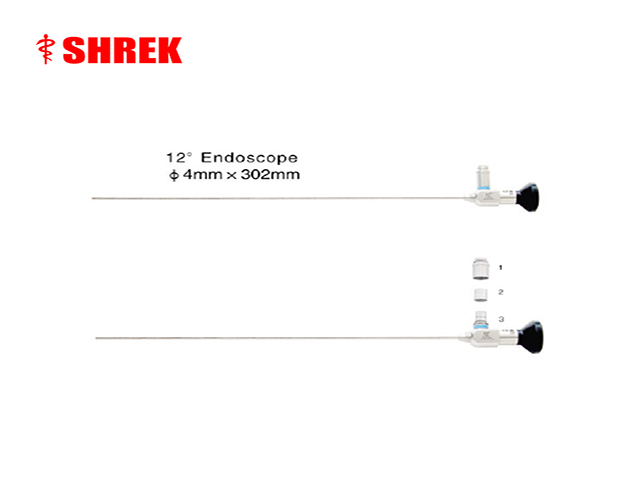Use and maintenance of hard tube endoscope
The hard tube endoscope is a convenient and direct medical device for hospital staff to observe the diseased tissue inside the human body. It has the advantages of high image clarity, high color reproduction, and convenient operation. With the expansion of the scope of using rigid tube endoscopes, doctors use rigid tube endoscopes more and more frequently. Rigid tube endoscopes are relatively delicate medical devices, which can easily cause damage. The following is an introduction on how to use, maintain and maintain the rigid tube endoscope to help medical staff use this device better and prolong the service life of the rigid tube endoscope.
Some surgical endoscopes are used in the sheath. When changing other angle endoscopes or inserting and pulling out instruments, care should be taken to move lightly and not use excessive force. Especially in the process of plugging and unplugging the speculum, when encountering resistance, you should carefully look for the cause, and pull it out together with the sheath when necessary, and do not use brute force.
When the speculum is operated with photoelectric technology such as laser vaporization, high-frequency resection, microwave, etc., pay attention to the distance between the front end of the speculum and the treatment point, and the front end of the speculum shall not be shocked or burnt. When using these instruments for the first time, the surgeon should practice repeatedly to grasp the relationship between the object distance and the actual object distance in the endoscope image, and confirm the distance between the front end of the endoscope and the treatment point, so that it can be used freely in actual surgery.
At present, planers have been widely used in clinical operations of otolaryngology and orthopedics to remove diseased tissues. The blade is sharp, high in hardness, fast in rotation, and large in torque. If the endoscope is cut to the endoscope, the endoscope will undoubtedly be damaged. In this type of operation, attention should be paid to adjusting the speed of flushing and suction, so that the endoscope image is clear and not blocked by blood stains at any time, and the rotating part of the control knife head is always within the observation range of the endoscope. When the operation range is large, the knife should be stopped first. Rotate the head, then move the speculum, and then move the cutter head under the surveillance of the speculum, and start planing after reaching the appropriate position. When you feel that the planer is working abnormally or the illuminance is suddenly reduced, it is possible that the speculum has been damaged and should be replaced in time to avoid greater losses.
In general important operations, there should be a set of spare speculum and key instruments, which can be replaced calmly when problems are found; if the speculum with an inappropriate angle or unmatched instruments is used to force the operation, it is easy to cause damage to the speculum.
How to maintain the rigid tube endoscope
Hard tube endoscopes should be kept in a special counter and placed in a special box, lined with soft sponge or polyurethane foam. Speculums and surgical instruments must be neatly stacked, and not overlapped. After the lid is closed, the speculum and instruments inside will not collide with each other during transportation. Because the tube of the endoscope is very thin, it will bend and deform when it is squeezed, bumped, bent, or dropped, resulting in damage to the lens or offset of the optical axis, causing the image to be unclear or unusable, so take it out of the box Or when putting in the hard tube endoscope, you should hold it flat with both hands and gently take it out or put it in. Never lift a section and pull it out. When moving the speculum in a rigid container such as a pallet, please keep it separate from other instruments and avoid excessive bumps to avoid hitting the speculum. A desiccant should be provided in the packing box to keep the box dry.
Ordinary hard tube endoscopes are not resistant to high temperature and high pressure. The main reason is that the packaging glue will deteriorate and deform at high temperatures, and the scope will open the glue and enter water, so high temperature and high pressure methods such as boiling and high pressure steam cannot be used for sterilization. Most hard tube endoscopes are damaged due to careless maintenance, bumps, and landing. There are also problems with the packaging glue, packaging technology, and packaging structure of individual manufacturers, which can cause water in the sight glass and open glue. These can be repaired.
Although hard tube endoscopes are delicate medical devices, they are not prone to problems in normal clinical operations or observations. As long as it is used properly, carefully maintained, and carefully maintained, doctors can use it with confidence, and the rigid tube endoscope will also exert its benefits.